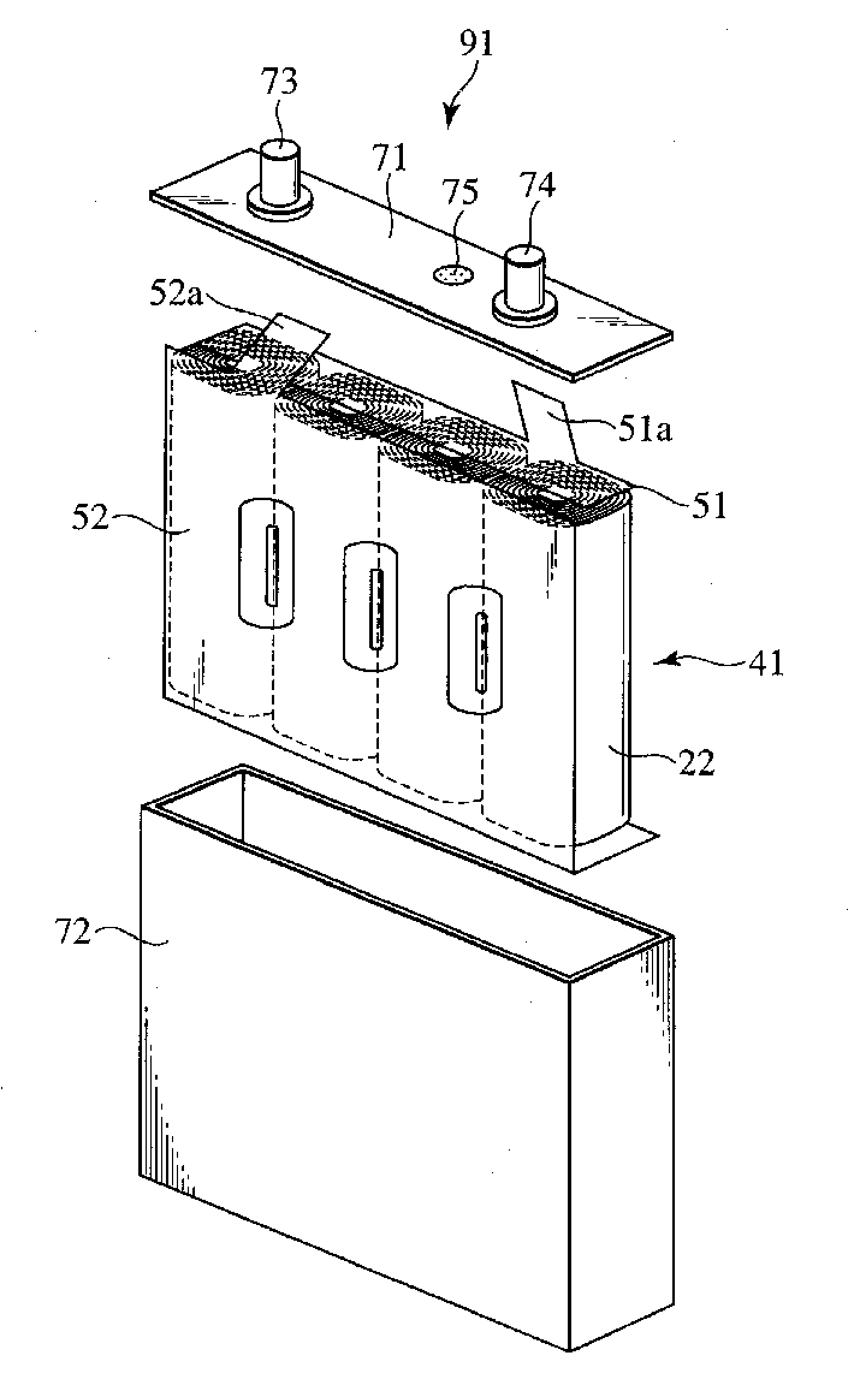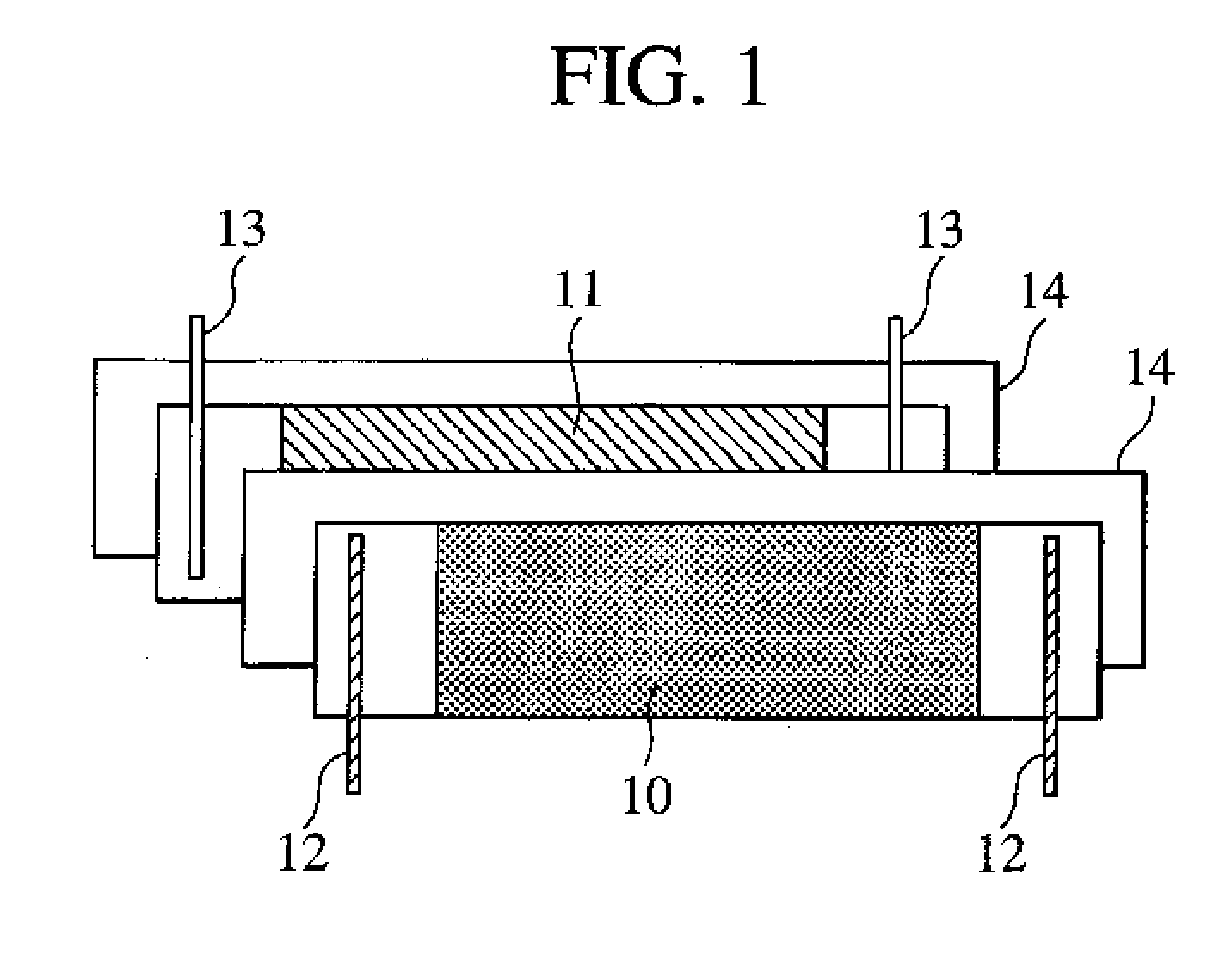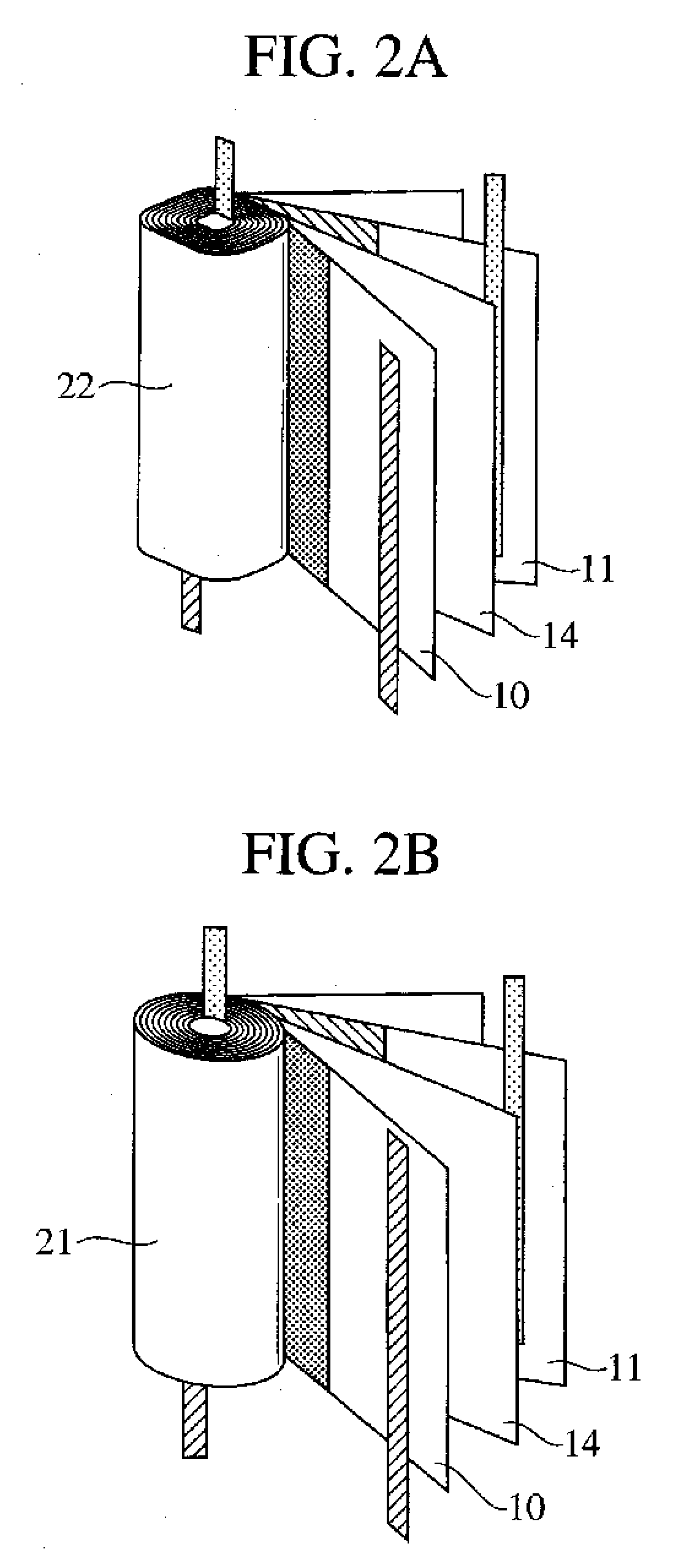Lithium secondary battery, secondary battery module, and secondary battery pack
a secondary battery and battery module technology, applied in the direction of secondary cell servicing/maintenance, cell components, sustainable manufacturing/processing, etc., can solve the problems of complex manufacturing process and battery structure, reduced yield, and complicated manufacturing process, so as to reduce resistance, reduce electrical resistance, and increase output power
- Summary
- Abstract
- Description
- Claims
- Application Information
AI Technical Summary
Benefits of technology
Problems solved by technology
Method used
Image
Examples
examples
[0086]The following describes examples of the lithium secondary battery 91, the lithium secondary battery module 112 and the lithium secondary battery pack 121, which are formed according to the present embodiment. The present invention, however, is not limited to the examples. The first and second examples describe the lithium secondary battery 91. The third example describes the lithium secondary battery module 112. The fourth example describes the lithium secondary battery pack 121. In addition, another lithium secondary battery is described as a comparative example below.
first example
Formation of Cathode
[0087]A nickel oxide, a manganese oxide and a cobalt oxide are used as materials of the cathode active material in the first example. Those oxides are prepared to ensure that atom ratios of Ni, Mn and Co are 1:1:1. The three types of oxides are pulverized and mixed by a wet pulverizer. Polyvinyl alcohol (PVA) is added to the pulverized and mixed material (oxides). The thus-obtained powder is granulated by a spray dryer. The granulated powder is introduced into a high-purity alumina container. Then, the powder is temporarily fired at a temperature of 600° C. for 12 hours to evaporate the PVA. The powder is then cooled. After the cooling, the powder is disintegrated. Then, lithium hydroxide monohydrate is added to and sufficiently mixed with the disintegrated powder to ensure that atom ratios of Ni, Mn and Co (transition metals) are 1:1:1. The mixed powder is introduced into a high-purity alumina container and fired at a temperature of 900° C. for 6 hours to obtain...
second example
[0095]In the second example, wound electrode bodies each having a capacity of 1.0 Ah, wound electrode bodies each having a capacity of 1.2 Ah, and wound electrode bodies each having capacity of 2.0 Ah are formed in the same way as the first example. The cross sectional areas of the cathode tab 12 and the anode tab 13 of each of the wound electrode bodies are in a range of 0.3 mm2 to 0.4 mm2. Six wound electrode bodies having capacities of 1.0 Ah are connected in parallel. Five wound electrode bodies having capacities of 1.2 Ah are connected in parallel. Three wound electrode bodies having capacities of 2.0 Ah are connected in parallel. The aforementioned pulse charging / discharging test was carried out on each of lithium secondary batteries, which are a lithium secondary battery having the wound electrode bodies each having a capacity of 1.0 Ah, a lithium secondary battery having the wound electrode bodies each having capacity of 1.2 Ah and a lithium secondary battery having the woun...
PUM
 Login to View More
Login to View More Abstract
Description
Claims
Application Information
 Login to View More
Login to View More - R&D
- Intellectual Property
- Life Sciences
- Materials
- Tech Scout
- Unparalleled Data Quality
- Higher Quality Content
- 60% Fewer Hallucinations
Browse by: Latest US Patents, China's latest patents, Technical Efficacy Thesaurus, Application Domain, Technology Topic, Popular Technical Reports.
© 2025 PatSnap. All rights reserved.Legal|Privacy policy|Modern Slavery Act Transparency Statement|Sitemap|About US| Contact US: help@patsnap.com



